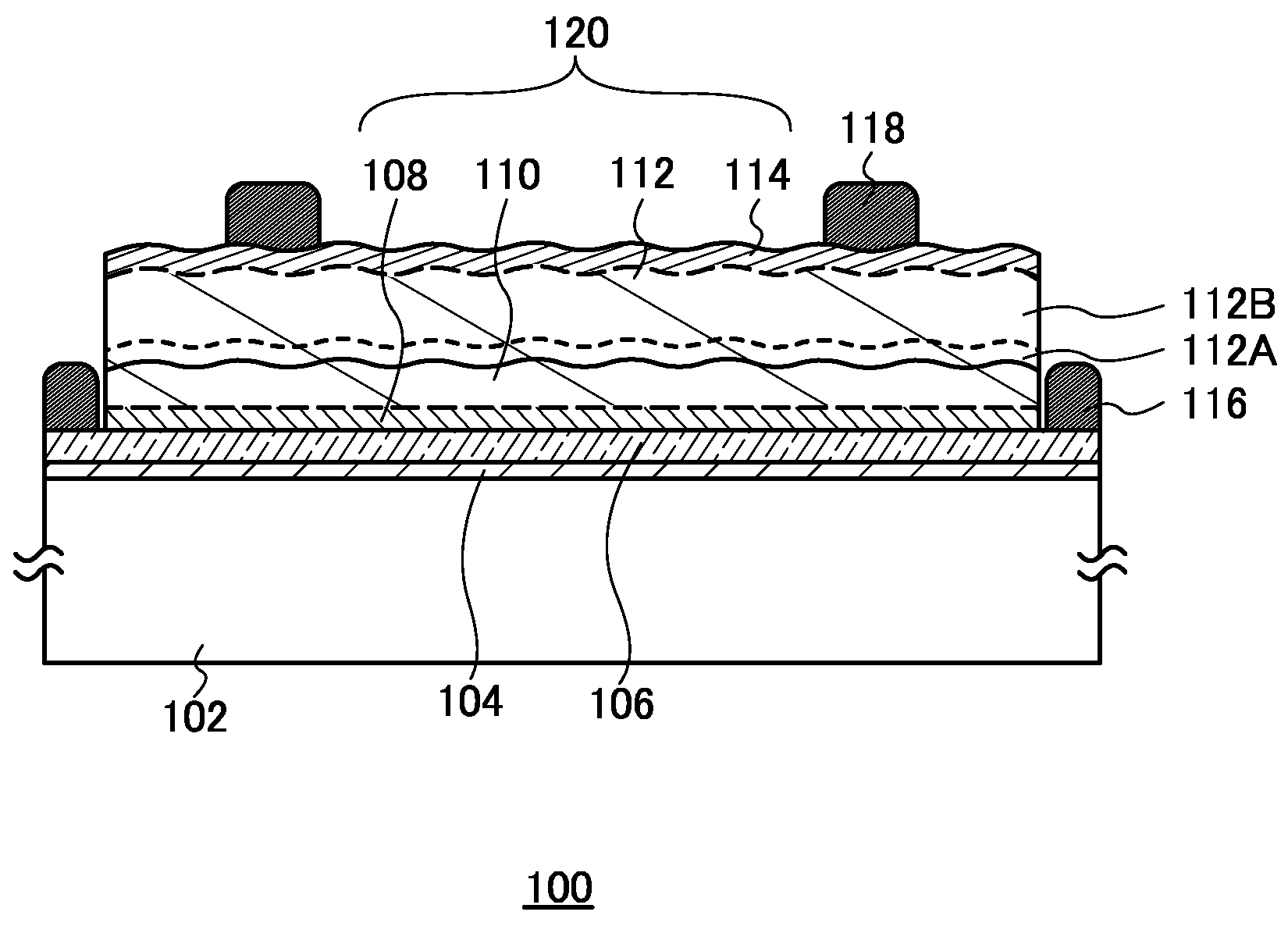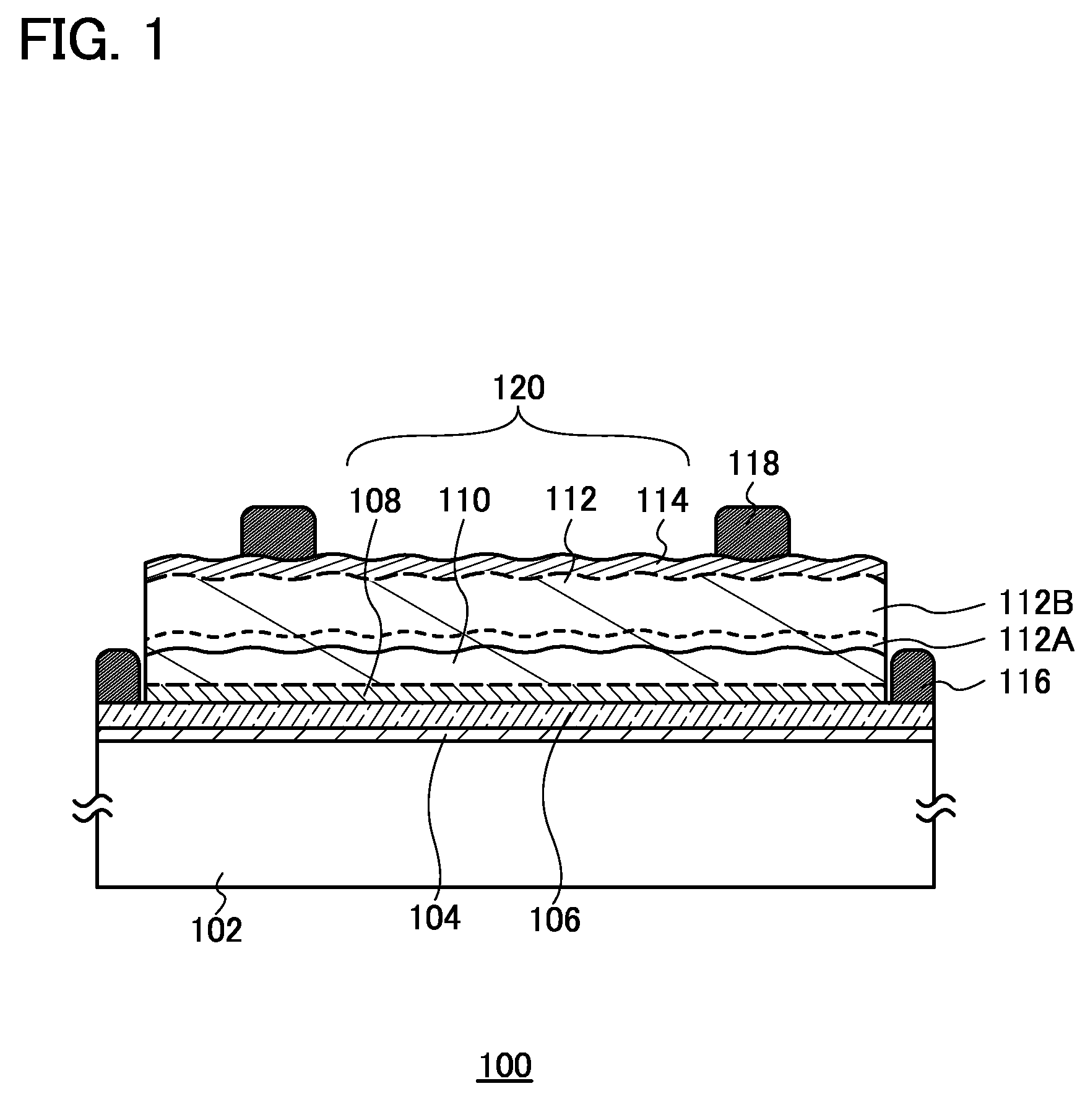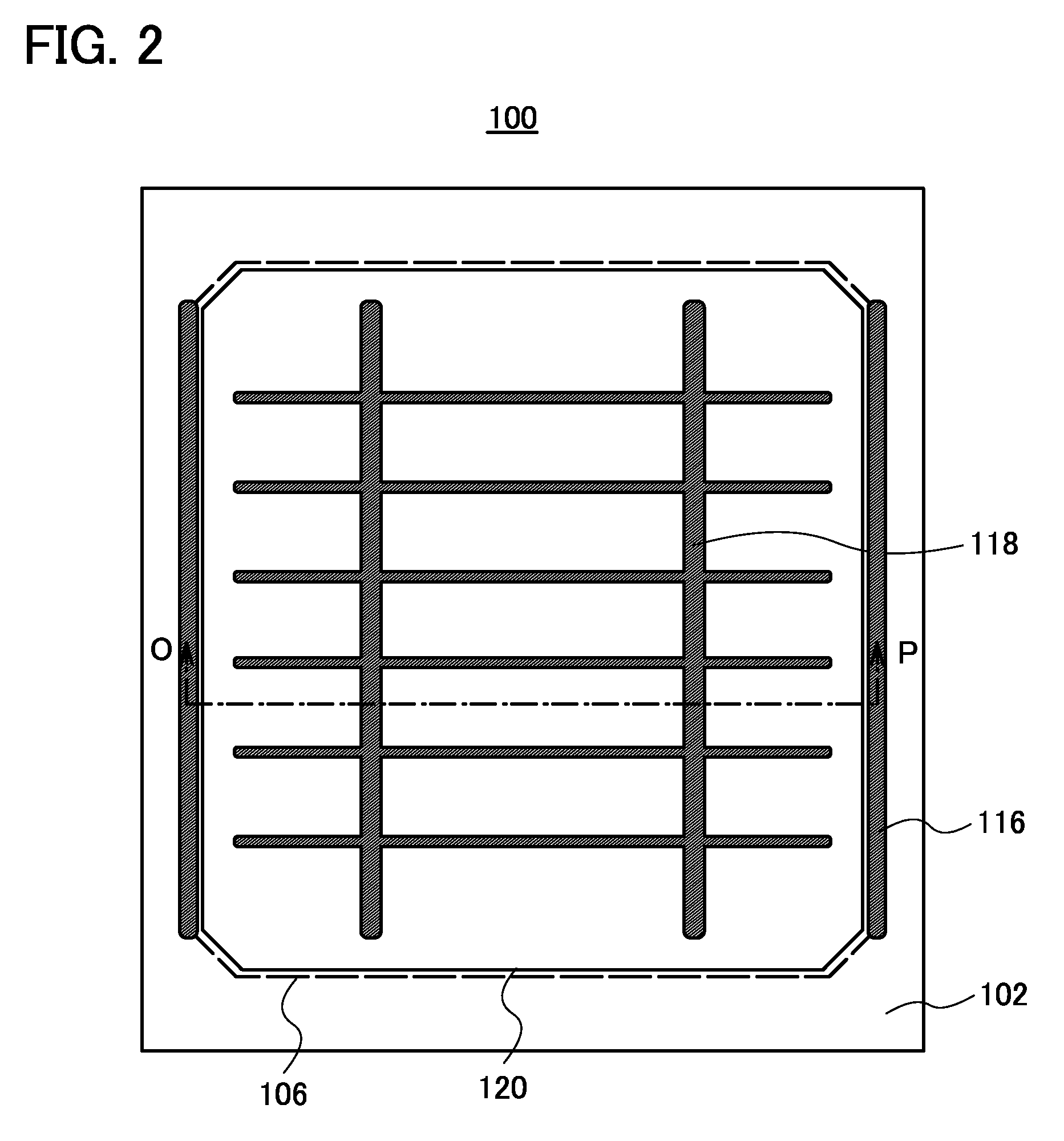Method for manufacturing photoelectric conversion device
- Summary
- Abstract
- Description
- Claims
- Application Information
AI Technical Summary
Benefits of technology
Problems solved by technology
Method used
Image
Examples
embodiment 1
[0054]FIG. 1 illustrates a schematic cross-sectional view of a photoelectric conversion device 100 according to this embodiment. FIG. 2 illustrates a schematic top view (plan view) of the photoelectric conversion device 100 according to this embodiment. Note that FIG. 1 illustrates an example of a cross-sectional view along O-Pin FIG. 2.
[0055]The photoelectric conversion device 100 described in this embodiment has a structure in which an insulating layer 104, a first electrode 106, and a unit cell 120 are stacked in order on a supporting substrate 102. Here, the unit cell 120 has a layered structure of a first impurity semiconductor layer 108 having one conductivity type, a first single crystal semiconductor layer 110, a second single crystal semiconductor layer 112, and a second impurity semiconductor layer 114.
[0056]An auxiliary electrode 116 is formed in an area of the first electrode 106 where the unit cell 120 is not formed, so that electric energy can be extracted. Further, a ...
embodiment 2
[0144]This embodiment describes an example of a method for manufacturing a photoelectric conversion device, which is different from that in the foregoing embodiment. Specifically, although the foregoing embodiment describes, taking (1) as an example, the formation order of the embrittlement layer 105, the first impurity semiconductor layer 108, the first electrode 106, and the insulating layer 104, this embodiment describes examples (2) to (4). Note that a manufacturing process other than the formation order of the embrittlement layer 105, the first impurity semiconductor layer 108, the first electrode 106, and the insulating layer 104 is similar to that of the foregoing embodiment; therefore, the description thereof is omitted.
[0145]The example (2) is described below with reference to FIGS. 10A to 10D.
[0146]First, the protective layer 107 is formed on one surface of the single crystal semiconductor substrate 103. Then, the single crystal semiconductor substrate 103 is irradiated wi...
embodiment 3
[0163]This embodiment describes an example of a method for manufacturing a photoelectric conversion device, which is different from those of the foregoing embodiments.
[0164]FIG. 22 illustrates an example of a photoelectric conversion device which is formed by directly bonding the first electrode 106 and the supporting substrate 102 to each other. In the case where the first electrode 106 has a smooth surface, for example, in the case where the first electrode 106 has a surface with an average surface roughness (Ra) of 0.5 nm or less, preferably 0.3 nm or less, the first electrode 106 and the supporting substrate 102 can be bonded to each other without formation of the insulating layer 104 (see FIG. 1 and the like).
[0165]The bonding is performed by attaching the surface of the first electrode 106 and the surface of the supporting substrate 102 which are sufficiently cleaned to each other. It is needless to say that before the bonding, the surface of the first electrode 106 and / or the...
PUM
 Login to View More
Login to View More Abstract
Description
Claims
Application Information
 Login to View More
Login to View More - R&D
- Intellectual Property
- Life Sciences
- Materials
- Tech Scout
- Unparalleled Data Quality
- Higher Quality Content
- 60% Fewer Hallucinations
Browse by: Latest US Patents, China's latest patents, Technical Efficacy Thesaurus, Application Domain, Technology Topic, Popular Technical Reports.
© 2025 PatSnap. All rights reserved.Legal|Privacy policy|Modern Slavery Act Transparency Statement|Sitemap|About US| Contact US: help@patsnap.com



